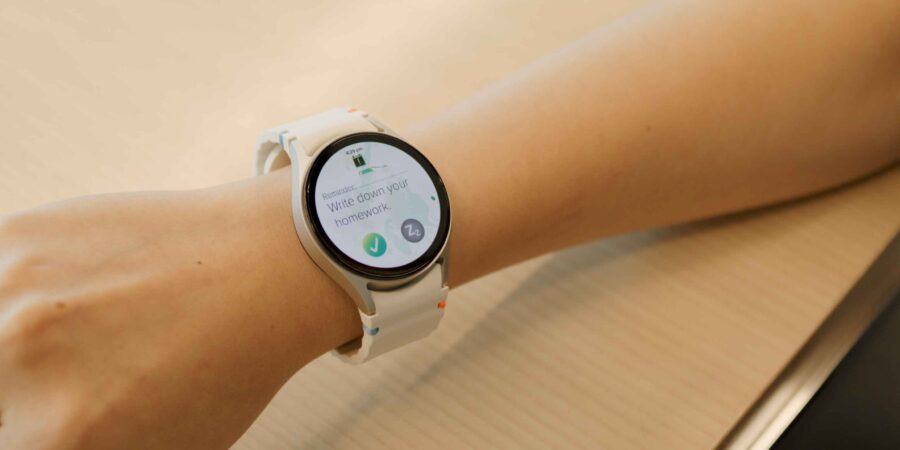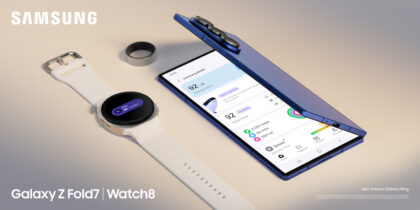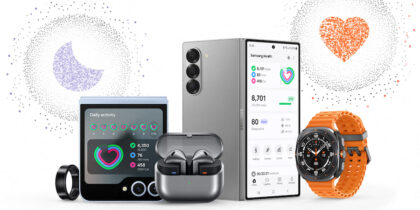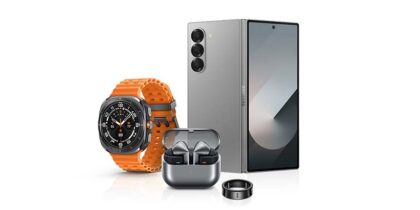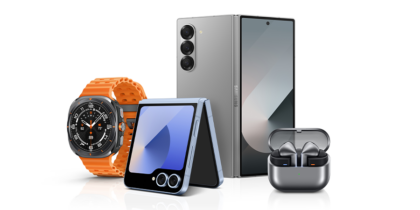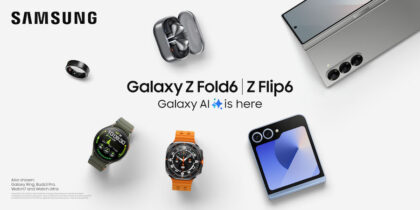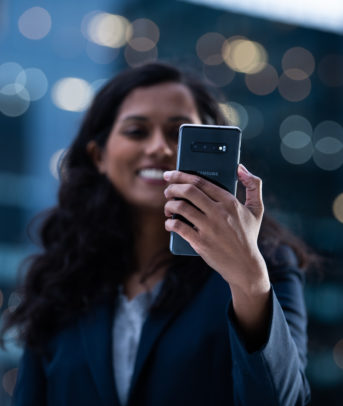Introducing Revibe: Pearson’s AI-enabled wearable, powered by Samsung’s Galaxy Watch and Knox Manage, helps students with focus and attention challenges.
The Challenge: Determining if tech could help people who struggle with focus and attention
Children and adults alike face challenges with focus and attention. This not only makes learning difficult, but can seriously impact a person’s ability to plan tasks, complete work and finish assignments.
According to the CDC, an estimated 7 million children aged 3 to 17 (about 11% of that age cohort) struggle with these issues, and 78% of this group had at least one co-occuring problem. As many as 20% of adults experience such difficulties, according to some estimates.
With children, the effects of limited focus can be particularly pronounced, inhibiting their educational, social and emotional development.
“In schools, these children tend to be reminded quite frequently to stay on task. Their names are typically called out or someone taps on their desk,” explains Rich Brancaccio, a former school psychologist and the founder of Revibe Technologies, whose assets were acquired by global learning company Pearson in 2024. “Traditional methods of classroom redirection can be very embarrassing, which can cause a negative relationship between the child and their teacher or parent. It can also create a negative sense of self-worth or self-esteem, which can have a prolonged impact on a child’s life.”
Complicating matters is the fact that children who struggle with focus tend to have average or in some cases, above-average intelligence, Brancaccio has found. “They’re intrinsically motivated to perform and to do as well as their peers,” he says. “Many times they just need a slight shift in the way they are doing things, be it a different way of learning or a gentle reminder.”
Taking a novel approach
Brancaccio saw firsthand how students struggle with these issues. Inspired to find a solution, he created Revibe, a wearable device designed to improve focus. An algorithm determined intervals at which the wrist-worn device would provide subtle vibrations as a “check-in,” or a reminder to stay on task.
Over roughly a decade, the device proved its value to thousands of parents, teachers and students. Across multiple studies, including one published in Brain Science, Revibe saw statistically significant improvement in the total scores for all parents and nearly all teacher outcomes, with moderate effect size improvements in attention, organization and planning, self-monitoring, school functioning and teacher-reported academic performance.
But in spite of Revibe’s highly positive impact, Brancaccio wanted to do even more to help students struggling with focus issues. In 2023 he embarked on an exhaustive search for a technology partner that could help him scale Revibe and deliver even better solutions.
That led to a critical meeting with Cherry Drulis, MBA, BSN, RN and Sr. Director, Regulated Industry for Samsung Healthcare Mobile B2B. After meeting for just 30 minutes, Brancaccio and Drulis saw the potential that could be achieved by leveraging Samsung’s smartwatch technology and its Knox security and device management platform.
Brancaccio saw that Revibe could leverage Samsung’s high-performance teams and specialized resources. Backed by Samsung technology, the Revibe team created an entirely new experience that could be personalized and adapted for as long as a user needs it.
To be sure the solution would find its way to the children who need it most, Brancaccio brought Revibe to education company Pearson in 2024, where he now oversees innovation as Senior Director. Pearson’s deep roots in educational research and assessment helped Revibe refine its algorithms and expand its applicability across diverse learning environments.

"With Freestanding Mode, Revibe can run straight on the watch, with no need for a phone.”
Amanda Panetti, Mobile B2B Sales Engineer at Samsung
The Solution: A perfect integration of hardware, software and learning science
When evaluating hardware options from multiple manufacturers, Revibe chose Samsung’s Galaxy Watch because its Knox Manage platform can be customized so the device is used solely for Revibe. Without messaging, music or other apps to cause distractions, it’s transformed from a smartwatch to an educational technology device.
Samsung’s Knox Manage also allows for decoupling from a phone. Most smartwatches are simply an extension of a smartphone, and many schools don’t allow children to carry phones in schools. The Galaxy Watch, however, is the only mass-market wearable that can be be put into “Freestanding Mode.” That departs from the traditional smartwatch setup, as no companion smartphone is needed for device management.
“Traditionally, solutions based on smartwatches require you to have a paired smartphone, which increases cost and complexity,” says Amanda Panetti, Mobile B2B Sales Engineer at Samsung. “With Freestanding Mode, Revibe can run straight on the watch, with no need for a phone.”
Creating an “out-of-the-box” user experience
As they sought to take the Revibe experience to new heights, the Pearson and Samsung engineering teams focused on making the setup and user experience as simple as possible. Now, all a user needs to do to get started is open the box, put on the watch and boot it up1. Because the devices are pre-configured, no software changes are required.
Training videos teach the user how it works. And a web-based app makes it easy to see metrics on a phone, tablet or computer.
Once logged into the Revibe web platform, a parent or educator can add basic account information, then start programming a child’s schedule.
At various points throughout the instructional periods, the watch will send the child periodic vibration reminders to ask if he or she is still focused and on task. The student can tap two times to confirm they’re still engaged, once if they are not.
With each response, the platform learns and becomes more personalized, adjusting based on the child’s interests and abilities in different subjects. And as the child makes progress, they are rewarded with encouraging badges and positive messages.
Samsung’s sensor suite tracks user activity that can be shared with parents and teachers
Revibe also offers a vast amount of valuable information about the student wearing the device. Its software uses the Samsung sensor suite, which tracks such things as heart rate, movement and temperature.
Unique algorithms detect and incorporate a bevy of academic behaviors. All of these signals can drive data-based educational decision making.
This allows Revibe to detect novel metrics, such as moments of fidgeting shown through actions that are cyclical, repetitive and academically non-functional, as well as other activities sometimes associated with attention and learning challenges.
“We distill large volumes of data into meaningful metrics,” Brancaccio says. “You can also share reports. You can send a PDF to the teacher, parent or any member of the care team.”
Brancaccio says the solution’s data helps pinpoint when focus slips and what seems to help get it back on track —such as whether users tend to report better focus or longer attention spans on certain days, times or after engaging in specific behaviors. These insights guide parents, teachers, and clinicians in making better decisions about next steps, and working together on possible solutions.
“It becomes a bit like a silent superhero that lives under their sleeve.”
Rich Brancaccio, a former school psychologist and the founder of Revibe Technologies
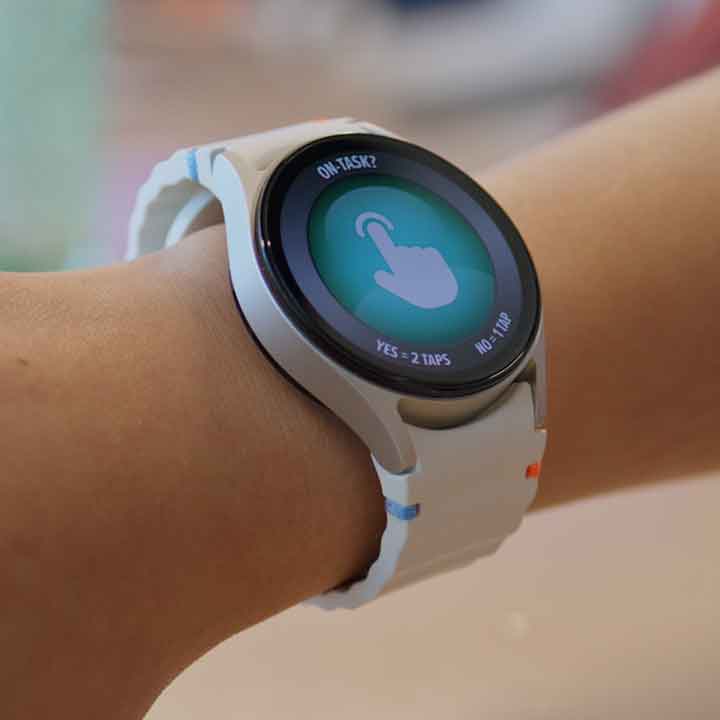
The Results: Improved focus—and untapped potential
Revibe—now bolstered by Samsung and Pearson—has been a game-changer: It’s helped hundreds of students adapt quickly, improve their focus and build their confidence.
Two peer-reviewed studies have been published (the Brain Science study, plus one in the Journal of Pediatric Neuropsychology), with more in the editing phase, lending additional evidence to the power of the partnership—and what’s possible for children and adults with attention issues.
Often, after just a one- to two-week learning period, Revibe often adjusts to its wearer and reaches optimal performance. Brancaccio also points out that children tend to take quick ownership of the device, remembering to charge it on their own and to keep track of it because it becomes a trusted partner of sorts. “It becomes a bit like a silent superhero that lives under their sleeve,” he says.
But even with all the promising results thus far, there’s much more potential given the power of the Pearson-Samsung partnership.
“As the solution evolves, says Drulis, “We’ll be there. What hardware best fits the application and the use case? We take the VOC, voice of customer, and break that into next-gen product evolution.”
Those improvements range from simple and immediately impactful (such as locking the watch’s pulldown menu to prevent children from tweaking the settings) to the more complex and enduring. For the latter, further AI integration will play a major role in helping the end user make the solution even better and more accurate for them.
“Business is important, but it’s what you do with your business that matters,” says Brancaccio. “That passion for helping people has really driven everyone at Pearson and Samsung who’ve supported us so far. They’ve been going above and beyond, and sharing some personal stories around why this is special for them—and its been this shared ‘do well by doing good’ philosophy that has brought this partnership to where it is today.”
For more information on Revibe, visit Pearson.
1Additional functionality available through caregiver dashboard

About Revibe, Pearson’s wearable technology
Revibe was founded in 2013 in Wake Forest, North Carolina, by Rich Brancaccio, a school psychologist. Brancaccio saw that many of the students in his school were unable to maintain focus at various points throughout the instructional day, and that traditional interventions were falling short. What’s more, he observed that when students were called upon to pay attention or were reminded to stay on task, they would become flustered or embarrassed, and even less able to complete tasks.
Brancaccio created Revibe Technologies with the idea of offering a wearable device that would vibrate at specialized intervals to remind the child to refocus. The idea was to instill self-monitoring so that anyone—child or adult—wearing the device would become more aware of when their attention was drifting.
Revibe, now a part of the global learning company Pearson, is dedicated to finding new ways to improve focus, confidence, and academic engagement for people with attention and focus challenges. With Pearson, the latest Revibe product represents a major improvement upon the company’s previous wearable devices, as it combines behavioral science and machine learning to provide near real-time support and data insights for teachers, parents and others on the care team. And it works on a cutting-edge Samsung platform that will offer broad and personalized improvements over time.
